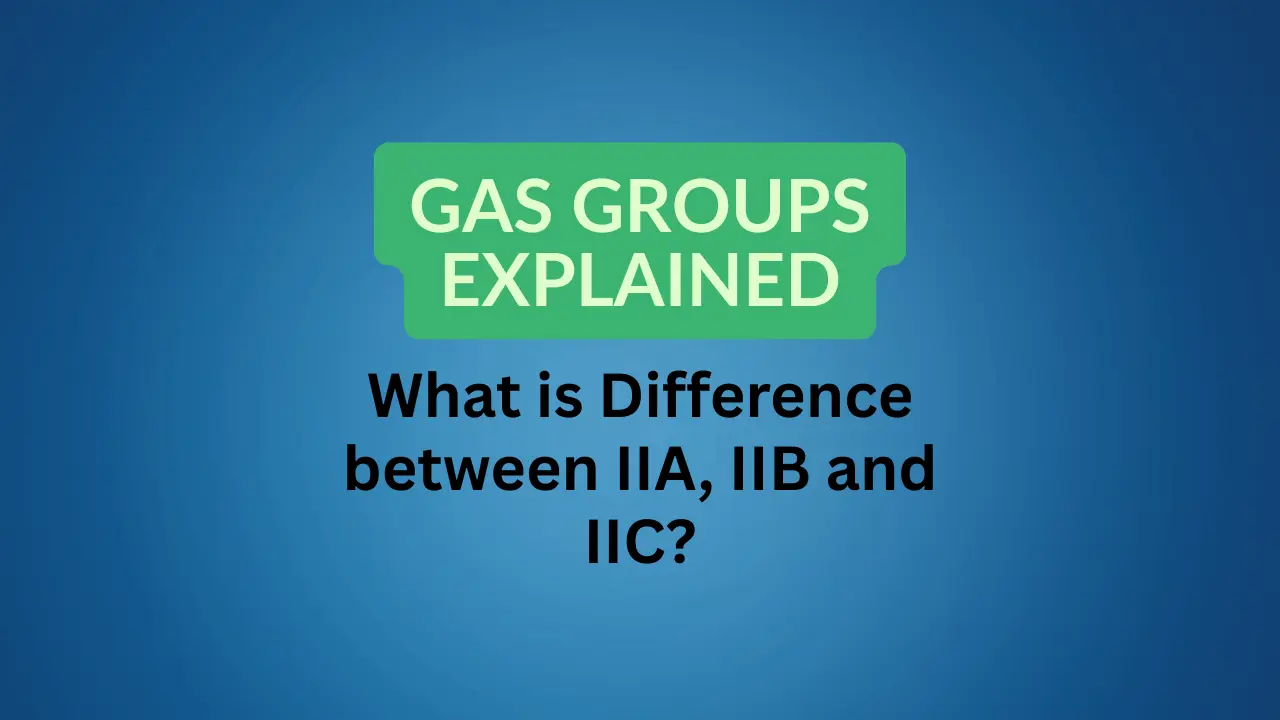Table of Contents
ToggleGas Groups : Introduction
When selecting electrical equipment for hazardous areas, we often focus on zone classifications (Zone 0, 1, 2) and protection types (Ex d, Ex i, etc.). But there’s another important factor that defines how dangerous the environment is: the gas group classification.
The gas group tells us how easily a flammable gas or vapor can ignite and how much energy is needed to trigger an explosion. Equipment must be certified for the correct gas group to prevent serious safety risks.
Let’s break down what IIA, IIB, and IIC gas groups mean, how they are different, and why choosing a transmitter rated for IIC gives you greater safety and flexibility.
What Are Gas Groups?
Gas groups are part of international standards like ATEX and IECEx. These groups categorize gases based on their ignition energy, explosiveness, and flammability.
The classification is:
- Group I: For mining environments (methane and coal dust)
- Group II: For all other industrial hazardous areas
Group II is further divided into:
- IIA: Least explosive gases
- IIB: Moderately explosive gases
- IIC: Most easily ignitable and dangerous gases
Gas Group Breakdown Table
| Gas Group | Ignition Energy Required | Common Gases | Flame Path Gap Requirement |
|---|---|---|---|
| IIA | High (least sensitive) | Propane, acetone, ammonia | Wide gap allowed |
| IIB | Medium | Ethylene, coke oven gas | Medium gap |
| IIC | Very low (most sensitive) | Hydrogen, acetylene, carbon disulfide | Narrowest gap |
Flame path gap refers to how tightly equipment must be sealed to contain an internal explosion. The more explosive the gas, the tighter the equipment must be.
Why Does Gas Groups Matter?
Using a device rated for the wrong gas group is a major safety risk.
- A transmitter certified for IIA may not safely contain or prevent an explosion in an IIC gas atmosphere.
- On the other hand, a device rated for IIC is designed to handle the most demanding conditions, including gases with low ignition energy.
In simple terms:
- IIA-certified devices are only safe in IIA zones.
- IIC-certified devices can be used in IIA, IIB, and IIC zones, making them the most flexible and secure choice.
Applications of Gas Groups
Why Choose IIC-Rated Transmitters?
Choosing IIC-rated transmitters gives you several important advantages:
- Wider usability: These devices can be used safely in any Group II hazardous area, whether it is IIA, IIB, or IIC. This flexibility simplifies design decisions, especially when working across different plant zones or projects with changing requirements.
- Higher safety level: IIC-rated equipment is built to withstand the most explosive and sensitive gases, such as hydrogen and acetylene. It must meet stricter construction and sealing requirements, offering an extra layer of protection.
- Futureproofing: If your plant expands or new processes are introduced that involve more volatile gases, IIC-rated transmitters will already meet the safety requirements. No need to replace or re-evaluate existing equipment.
- Simplifies procurement and inventory: Instead of stocking separate devices for different gas groups, companies can standardize on IIC-rated models. This reduces part numbers, avoids confusion during installation, and ensures compliance.
- Minimizes installation errors: Selecting the wrong gas group can lead to unsafe installations. Using IIC-rated devices across the board helps eliminate this risk.
Yes, IIC-rated equipment may cost slightly more upfront, but the added safety, compliance, and long-term cost savings make it a smart choice for most industrial applications.
Summary
Choosing the right gas group is just as important as selecting the correct zone classification, protection type or Temperature Classes.
When in doubt, go with IIC-rated transmitters or instruments. They offer the highest level of ignition protection and can be installed across all hazardous gas zones, giving you peace of mind, safety, and long-term flexibility.
I hope you like above blog. There is no cost associated in sharing the article in your social media. Thanks for reading!! Happy Learning!!


